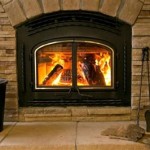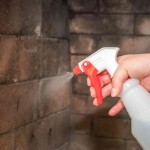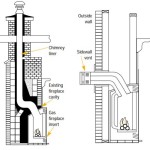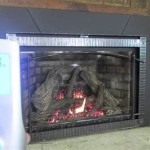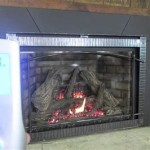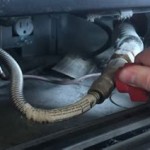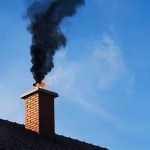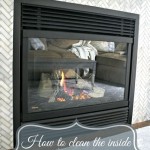Ventless Fireplace Heaters: A Comprehensive Overview
Ventless fireplace heaters represent a diverse category of heating appliances designed for supplemental warmth in residential and commercial spaces. Unlike traditional fireplaces, these units do not require a chimney or flue, offering installation flexibility and potential cost savings. This article delves into the operational principles, advantages, disadvantages, safety considerations, and various types of ventless fireplace heaters.
The term "ventless" can be misleading. While these units do not necessitate external venting, they still consume oxygen during combustion and release byproducts into the room. Therefore, proper ventilation through other means, such as opening a window periodically, is crucial when operating a ventless fireplace heater. The technology behind ventless fireplaces has evolved to incorporate safety features designed to minimize risks associated with indoor air quality and carbon monoxide buildup.
Fuel Types and Operational Principles
Ventless fireplace heaters primarily utilize two fuel types: natural gas and propane. Natural gas models connect to an existing natural gas line, while propane units operate using refillable propane tanks. The choice between the two often depends on fuel availability and cost in a particular region. Some models offer dual-fuel capability, allowing operation with either natural gas or propane.
The internal combustion process is carefully controlled. A thermostatic control system regulates the gas flow to the burner, maintaining the desired temperature. The burner is typically designed to ensure complete combustion, minimizing the production of harmful emissions. Many models incorporate an oxygen depletion sensor (ODS), which automatically shuts off the gas supply if the oxygen level in the room drops below a safe threshold. This is a critical safety feature.
Advantages of Ventless Fireplace Heaters
One of the most significant advantages of ventless fireplace heaters is their ease of installation. They can be placed against a wall or in a corner, requiring minimal structural modifications. This makes them an attractive option for homeowners who want the ambiance of a fireplace without the complexity and expense of installing a traditional chimney.
Ventless fireplaces also offer high heating efficiency. Because the heat is not lost up a chimney, a greater percentage of the fuel's energy is converted into usable heat for the room. This can translate into lower heating bills, especially when used as a supplemental heating source to complement a central heating system.
Aesthetic appeal is another key benefit. Ventless fireplaces are available in a wide variety of styles, from traditional log sets to modern, linear designs. They can significantly enhance the visual appeal of a room and create a warm and inviting atmosphere.
Disadvantages and Safety Considerations
Despite their advantages, ventless fireplace heaters have certain drawbacks. The primary concern is indoor air quality. Even with complete combustion, ventless fireplaces release small amounts of carbon dioxide, water vapor, and other byproducts into the room. Inadequate ventilation can lead to the buildup of these substances, potentially causing health problems, especially for individuals with respiratory conditions.
Carbon monoxide poisoning is a serious risk. While modern ventless fireplaces are equipped with ODS systems, these sensors are not foolproof. It is crucial to install and maintain a carbon monoxide detector in the room where the fireplace is located and to ensure adequate ventilation.
Moisture buildup can also be a concern. The combustion process produces water vapor, which can increase humidity levels in the room. Excessive humidity can lead to mold growth and other moisture-related problems. Regular ventilation is essential to mitigate this risk.
Types of Ventless Fireplace Heaters
Ventless fireplace heaters come in several different types, each with its own characteristics and applications. Ventless gas log sets are designed to be placed inside an existing masonry fireplace, providing the look and feel of a traditional wood-burning fireplace without the need for a chimney. These require the firebox and the chimney to be sealed to prevent heat loss and to maintain safety standards.
Ventless fireplace inserts are designed to fit into an existing fireplace opening, providing a more efficient and aesthetically pleasing alternative to traditional wood-burning fireplaces. They typically offer higher heating output and more advanced control features.
Ventless wall-mounted fireplaces are designed to be hung directly on a wall, offering a space-saving solution for smaller rooms. They are often available in modern designs and can be easily installed without significant modifications.
Ventless freestanding fireplaces are portable units that can be moved from room to room, providing flexible heating options. They typically run on propane and require a refillable propane tank.
Selection considerations should always include room size, heating requirements, and aesthetic preferences. It is also important to carefully review the manufacturer's instructions and safety guidelines before operating a ventless fireplace heater.

Radiance Vent Free Gas Stove The Place
:max_bytes(150000):strip_icc()/ventless-gas-fireplaces-4160746-hero-f9d4bdcd9bd446eb84406de306f790ba.jpg?strip=all)
How To Pick Out A Ventless Gas Fireplace

Vent Free Fireplaces Stoves At Com

Empire Vent Free Stove Bedroom Approved Fine S Gas

Ventless Gas Fireplace Propane

50 Free Standing Ventless Gas Fireplace Visualhunt

Vent Free White Mountain Hearth

Vermont Castings Star Vent Free Gas Stove Inseason Fireplaces Stoves Grills Rochester Ny

Duluth Forge Dual Fuel Ventless Gas Fireplace 26 000 Btu Remote Control Antique White Finish 170105 The Home Depot

Rasmussen Amer B C9b Coalfire Large Americana Basket Ventless Fireplace Heater
Related Posts

